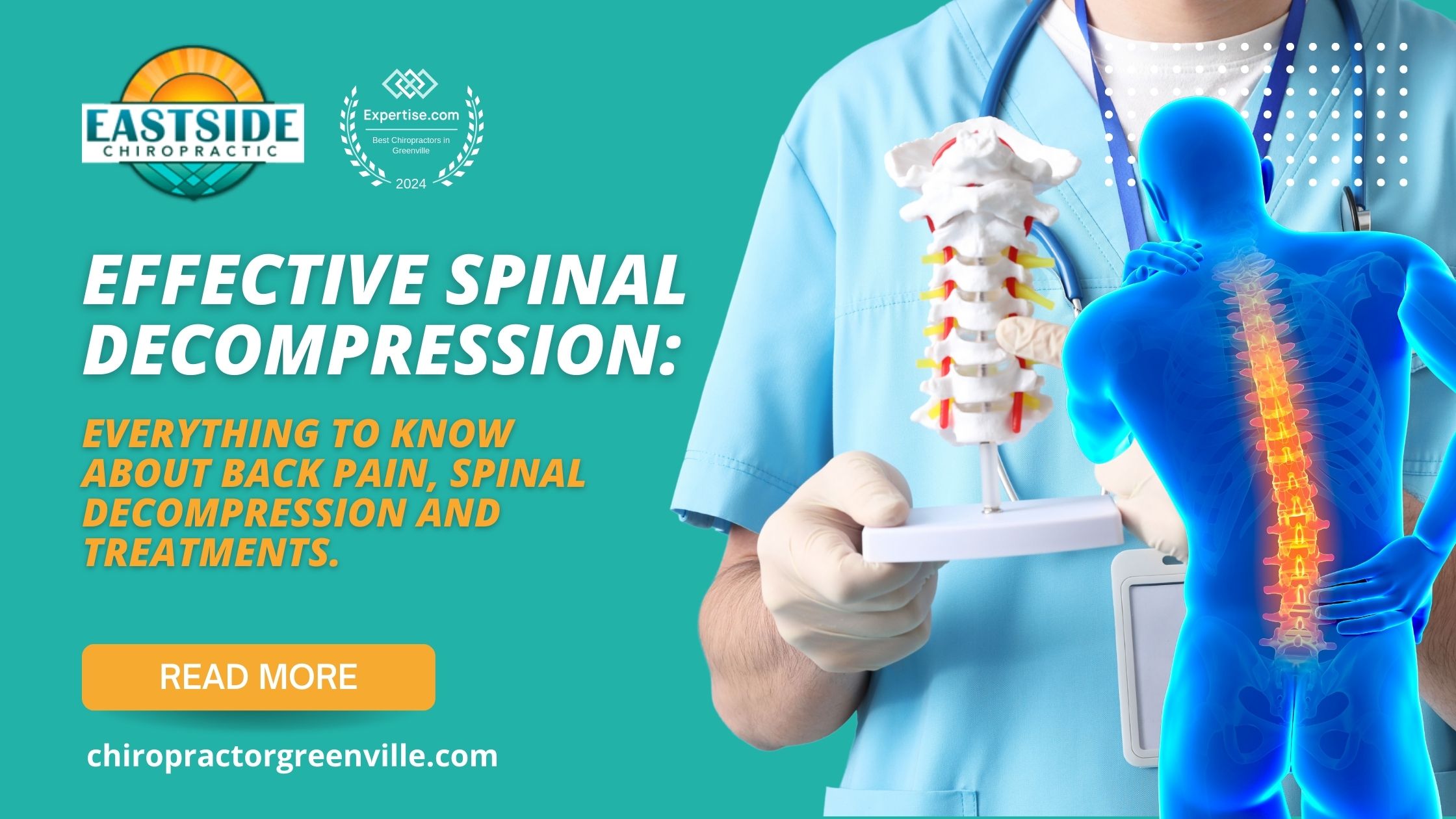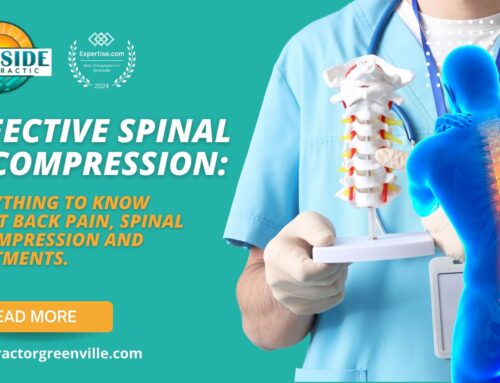Success Rate of Spinal Decompression: A Comprehensive Guide
Introduction
Have you ever experienced back pain that simply won’t go away, no matter what you do? If so, you might have come across the concept of spinal decompression therapy. Here at Eastside Chiropractic PA, located in Taylors, SC, we specialize in this innovative treatment designed to provide relief from chronic back pain. In this article, we’ll dive deep into spinal decompression therapy, its success rates, and why it might be the right choice for you.
Understanding Spinal Decompression
How Does Spinal Decompression Work?
Spinal decompression therapy is a non-surgical, traction-based treatment aimed at relieving pressure on the spinal discs. Utilizing specialized tables, chiropractors apply gentle, targeted force to stretch the spine, promoting the retraction of bulging or herniated discs and improving nutrient flow for healing.
Types of Spinal Decompression Techniques
There are two main types of spinal decompression: mechanical and manual. Mechanical decompression involves an automated table that adjusts to your specific needs, while manual decompression is performed by a chiropractor using hands-on techniques.
Conditions Treated by Spinal Decompression
This therapy is effective for treating various conditions, including:
- Herniated or bulging discs
- Degenerative disc disease
- Spinal stenosis
- Sciatica
- Facet syndrome
- And more
The Success Rate of Spinal Decompression
What Do Success Rates Mean in Spinal Decompression?
Success rates in spinal decompression refer to the percentage of patients who experience significant pain relief and improved mobility after undergoing therapy. These rates can vary based on multiple factors.
Factors Influencing Success Rates
Several factors influence the success of spinal decompression, including:
- The specific condition being treated
- Severity of the condition
- Patient’s overall health and lifestyle
- Adherence to post-treatment care
Clinical Evidence on Spinal Decompression Success Rates
Research Studies and Findings
Numerous studies indicate that spinal decompression has a high success rate, often ranging between 70% to 90%. For instance, a study published in the Journal of Neurological Research found an 86% success rate in patients treated for herniated discs.
Case Studies and Patient Testimonials
At Eastside Chiropractic PA, we have documented numerous success stories. Patients frequently report significant pain reduction and a return to normal activities. Jane, a 45-year-old office worker, shared, “Before spinal decompression, my life was a cycle of pain and limited movement. Now, I feel rejuvenated!”
Benefits of Spinal Decompression
Pain Relief and Mobility Improvement
One of the primary benefits of spinal decompression is pain relief. By reducing pressure on spinal nerves, patients often experience a marked decrease in pain and an increase in mobility.
Non-Invasive Nature
Unlike surgical options, spinal decompression is non-invasive. This means no incisions, no lengthy recovery times, and minimal risk of complications.
Long-Term Benefits
Patients who complete their full course of treatment often find that the benefits are long-lasting. Regular follow-ups and adherence to recommended exercises can help maintain these results.
Eastside Chiropractic PA’s Approach
Customized Treatment Plans
At Eastside Chiropractic PA, our philosophy is that no two patients are alike. That’s why we create customized treatment plans tailored to each patient’s unique condition and needs.
Advanced Technology and Equipment
We utilize state-of-the-art equipment to ensure precise and effective spinal decompression therapy. Our decompression tables are designed to deliver targeted relief accurately.
Skilled and Experienced Chiropractors
Our team comprises skilled and experienced chiropractors dedicated to providing the highest level of care. Dr. Smith, with over 20 years of experience, leads our practice with a commitment to patient wellness.
The Procedure: What to Expect
Initial Consultation and Diagnosis
Your journey begins with a thorough consultation and diagnosis. We’ll review your medical history, perform a physical exam, and likely use imaging studies to determine the best course of treatment.
Treatment Sessions: What Happens During Each Visit
During each session, you’ll lie on a decompression table while the system gently stretches your spine. Most sessions last about 30 minutes, and patients typically feel relaxed and comfortable throughout.
Post-Treatment Care and Exercises
After your sessions, we’ll provide specific exercises to enhance the benefits of your treatment. Adherence to these routines is crucial for long-term results.
Comparing Spinal Decompression to Other Treatments
Medications and Pain Relievers
While medications can provide temporary relief, they do not address the root cause of spinal issues. Spinal decompression, on the other hand, targets the underlying problem.
Physical Therapy
Physical therapy often complements spinal decompression. While PT focuses on strengthening muscles and improving flexibility, decompression addresses disc-related issues.
Surgery
Surgery is often seen as a last resort due to its risks and recovery time. Spinal decompression offers a non-invasive alternative with fewer risks and quicker recovery.
Potential Risks and Side Effects
Common Side Effects
Most patients experience little to no side effects. Mild discomfort or soreness may occur but typically subsides quickly.
Who Should Avoid Spinal Decompression Therapy?
This therapy may not be suitable for individuals with severe osteoporosis, fractures, or certain infections. A thorough evaluation will determine if you’re a good candidate.
Patient Eligibility for Spinal Decompression
Who Can Benefit the Most?
Patients with chronic back pain, herniated discs, or sciatica are often good candidates. It’s essential to have a professional assessment to determine suitability.
Pre-existing Conditions and Contraindications
Certain conditions like advanced spinal conditions or post-surgical hardware installations can contraindicate decompression therapy. Always consult with a chiropractor for personalized advice.
Affordability and Insurance
Cost of Spinal Decompression Therapy
The cost can vary based on the number of sessions and specific patient needs. We’ll discuss all costs upfront during your initial consultation.
Insurance Coverage and Out-of-Pocket Expenses
Many insurance plans cover spinal decompression. We’ll help you navigate your insurance benefits to minimize out-of-pocket expenses.
Success Stories from Eastside Chiropractic PA
Real-Life Testimonials
We’ve successfully treated countless patients in Taylors, SC. John, a 60-year-old retired teacher, says, “Eastside Chiropractic PA gave me my life back. I can enjoy my hobbies again.”
Before and After Results
Our ‘before and after’ assessments highlight remarkable improvements in our patients’ conditions. Improved posture, mobility, and pain relief are common outcomes.
Frequently Asked Questions (FAQs)
Addressing Common Concerns and Misconceptions
Is spinal decompression painful? How long does each session last? We’ll address these and more to ensure you feel confident in your treatment choice.
Conclusion
Spinal decompression therapy offers a promising solution for those struggling with chronic back pain. With its high success rates, non-invasive nature, and long-term benefits, it’s an excellent alternative to more invasive treatments. At Eastside Chiropractic PA, we are committed to providing the highest level of care tailored to your unique needs, utilizing advanced technology and our expertise. Visit us in Taylors, SC, and take the first step towards a pain-free life.
Additional FAQs
Can Spinal Decompression Help with Sciatica?
Yes, spinal decompression can be highly effective in relieving sciatic pain by reducing pressure on the sciatic nerve.
How Many Sessions Are Typically Needed?
The number of sessions varies by individual but typically ranges from 15 to 30 sessions over a few weeks.
Is the Treatment Painful?
The treatment is generally painless. Some patients may experience mild discomfort initially, but it usually subsides.
What is the Recovery Time After Treatment?
There’s minimal to no recovery time. Most patients can resume normal activities immediately after each session.
How Do I Schedule a Consultation?
Scheduling a consultation is easy! Contact us at Eastside Chiropractic PA through our website or call our office in Taylors, SC. We look forward to helping you on your journey to wellness.


